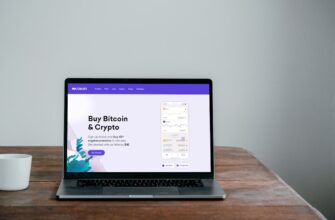Understanding how to convert Indonesian Rupiah (IDR) to US Dollars (USD) is essential for travelers, investors, and businesses engaged in cross-border transactions. With Indonesia’s growing economy and the USD’s global dominance, knowing the exchange mechanics ensures you get optimal value. This comprehensive guide covers everything from current rates to practical conversion strategies.
WHAT IS THE IDR TO USD EXCHANGE RATE?
The IDR to USD exchange rate represents how many Indonesian Rupiah are needed to purchase one US Dollar. This dynamic value fluctuates based on market forces like supply and demand, economic policies, and geopolitical events. For example, if the rate is 15,000 IDR/USD, you’d need 15,000 Rupiah to buy $1. Central banks and financial institutions reference this rate for international trade and remittances.
CURRENT IDR TO USD MARKET DYNAMICS
As of 2023, the IDR/USD rate typically ranges between 15,000 and 16,000 Rupiah per Dollar, though real-time rates vary daily. Key factors influencing movements include:
– Indonesia’s inflation rates and GDP growth
– US Federal Reserve interest rate decisions
– Commodity prices (e.g., palm oil, coal exports)
– Political stability in Southeast Asia
– Global USD strength against emerging market currencies
Always verify live rates via financial platforms like XE.com or Bloomberg before transacting.
HOW TO CONVERT IDR TO USD: STEP-BY-STEP
Follow these methods for seamless currency conversion:
1. Banks: Major institutions like Bank Mandiri or BCA offer secure exchanges with moderate fees. Requires account access or in-person visits.
2. Money Changers: Licensed kiosks in tourist areas (e.g., Bali, Jakarta) provide competitive rates but compare multiple vendors.
3. Digital Platforms: Apps like Wise or Revolut allow online conversions with real-time rates and lower fees (typically 0.5%-3%).
4. Airports: Convenient but usually offer poor rates – exchange minimal amounts here.
5. ATMs: Withdraw USD directly using international cards; check bank withdrawal fees first.
TOP 5 TIPS FOR OPTIMAL IDR TO USD CONVERSION
Maximize your exchange value with these strategies:
– Monitor rate trends using tools like Investing.com’s IDR/USD chart
– Avoid weekend/holiday conversions when liquidity is low
– Negotiate fees at money changers for large sums (>$1,000 equivalent)
– Use limit orders on forex platforms to target favorable rates
– Carry USD to Indonesia if traveling – it’s widely accepted for high-value purchases
FREQUENTLY ASKED QUESTIONS (FAQ)
Q: What’s the best place to exchange IDR to USD?
A: Licensed money changers in major Indonesian cities generally offer better rates than airports or hotels. For digital convenience, apps like Wise are recommended.
Q: Are there limits on IDR to USD conversion?
A: Indonesia permits up to 1 billion IDR (~$65,000) per transaction without special documentation. Larger amounts require anti-money laundering declarations.
Q: How do taxes affect IDR/USD conversions?
A: Indonesia imposes a 10% VAT on money changer services but not bank transfers. US citizens must report foreign currency gains exceeding $200 to the IRS.
Q: Should I convert IDR to USD now or wait?
A: Analyze market conditions: If US interest rates are rising or Indonesian exports are strong (boosting IDR), converting sooner may be advantageous. Consult forex forecasts for timing.
Q: Can I use credit cards instead of cash conversion?
A: Yes, but check dynamic currency conversion (DCC) fees – often 3-5% per transaction. Opt to pay in IDR for better rates.
HISTORICAL CONTEXT AND FUTURE OUTLOOK
The IDR/USD averaged 14,000 in the early 2010s but weakened post-2013 due to commodity price slumps. Recent Bank Indonesia interventions have stabilized volatility. Analysts project moderate IDR strengthening to 14,500-15,500/USD by 2025, driven by digitalization and manufacturing growth, though global recessions could pressure emerging currencies.
CONCLUSION
Mastering IDR to USD conversions empowers you to navigate financial decisions confidently. Whether funding a Bali vacation or managing international investments, prioritize real-time rate tracking, fee-aware platforms, and macroeconomic awareness. Bookmark reliable currency tools and revisit this guide for updates on Indonesia’s evolving forex landscape.








